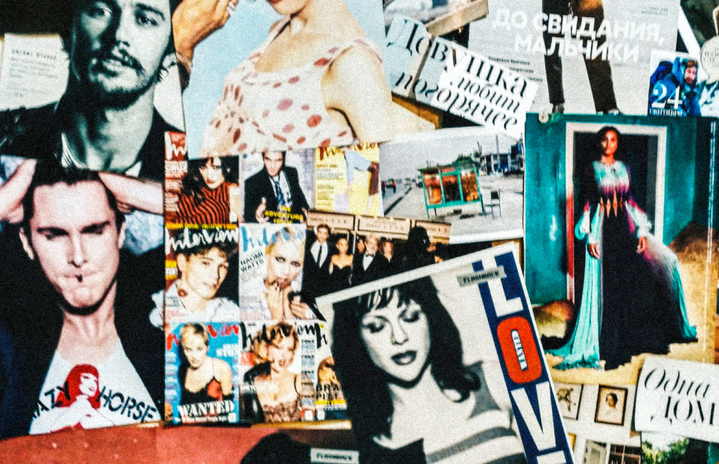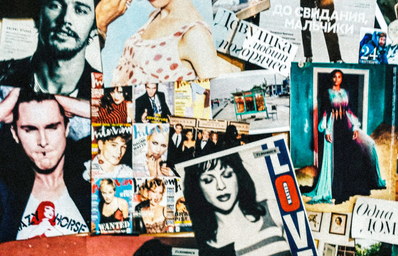Life Background
Manfred Thierry Mugler was born in the confines of France, in Strasbourg, just 15 minutes from Germany. At a young age, he began to study dance and joined the ballet corps at 14. He also studied interior design at the Strasbourg School of Decorative Arts. He designed for labels like Karim and Gudule. He freelanced for them, as well as other designers here and there, and later created his own collection, which started it all.
Who is he?
Couturier. Advertiser. Director. Change-Maker.
Mugler is an icon and backbone of the fashion industry. He died recently at age 73 in his home country of France. Known to push the famously slim boundaries of the fashion industry, Mugler was most famous for his work with social issues, sexy fabrics, and couture “untouchables,” like drag queens, porn stars and transgender women.
He launched the high fashion brand Mugler in 1973 with his “Café de Paris” collection and didn’t retire until 2002. This retirement wasn’t permanent, though, with him returning in 2013 to manage creative advertising.
In Café de Paris, he began to create his brand. Mugler’s clothing was known for its “architectural” style, – likely from his interior design background – with sharp angles, iconic shapes focused around the shoulders and waist, and unique fabric. He used this first collection to tell the world who he was and what his brand meant, and left no questions about these things.
The most iconic pieces of this collection were bright and sparkly silver dresses with sharp angles at the shoulders, emphasis at the waist, and texture all around. These looks were completed with matching silver urchin-looking earrings and hair that can only be described as Suleiman the Magnificent-esque.
He dressed many personalities over his career, including Beyonce, Diana Ross, Michael Jackson, Madonna and David Bowie. One of his most famous designs is Demi Moore’s black, strappy dress from “Indecent Proposal” in the scene where she says, “The dress is for sale. I’m not.”
His shows often had the message of “Go big or go home,” as he was quoted saying, “I don’t believe in natural fashion. Let’s go for it! The corset. The push-up bra. Everything! If we do it, let’s do the whole number,” by the New York Times in 1994.
He was even hired by Beyonce to create her costumes for her 2009 “I am … Sasha Fierce” tour, as well as inspiring many of Gaga’s looks.
If you remember the 2019 Met Gala with the Camp theme, then you have seen Mugler. Kim Kardashian’s latex and bejeweled wet look was made by Mugler, and he even came out of retirement to do so. The House of Mugler (the fashion brand he started) is still running, but this was the first time in many years that Mugler himself made a garment.
While fashion was his true public muse, he didn’t have a forever love affair with the art form. When he left, he said, “Fashion is beautiful, 3-D art on a human being. But it wasn’t enough, which is why I went on to create in other ways. For me, it wasn’t the right tool anymore. But perfume still interests me,” by Elle Magazine.
And he didn’t just do fashion. If you’re into perfumes, you’re sure to know the iconic star-shaped Angel perfume. This perfume has an entire history of its own. It failed miserably for two years, consumers had a complete love/hate relationship with the scent. After that, it completely blew up into one of the best-selling perfumes of all time, and still holds rank on that list.
1992
There’s no way to talk about Mugler without talking about some of his best shows.
One of Mugler’s most iconic shows is the 1992 Spring/Summer Ready-to-Wear collection. While Ready-to-Wear was not his favorite when compared to Couture, that doesn’t mean he didn’t come ready to scalp the other designers.
This collection was modeled by many types of people, not just your Kate Moss’ and Cindy Crawford’s, though they often modeled for him, too. He had both a more racially and age-diverse than most supermodel squad, a male porn star and a few transgender models.
Now, clothing time. The clothes had an overall sparkly and western feel to them, with all looks dawning either a fun hat or interesting hair. Like I said before, this was to go big or go home, and Mugler was not afraid that things like hair would distract from his clothes.
Many looks in this show featured cow print, fringe, cut-out holes, textured fabrics and that iconic broad-shoulder-skinny-waist we expect from Mugler. He played with unique materials, like rope in detail look 36, motorcycle handles in look 60, a blow-up cactus in look 69, and a face mask (pre-pandemic) in detail look 25.
For a full slideshow of the looks in this collection, go here.
1995
Called “[one] of the nineties’ most unforgettable fashion shows” by Vogue, this show is one fashion will never forget.
While this one is much less colorful than his 1992 collection, it leaves not a second of boredom. Somehow monochrome black is the most interesting outfit you’ve ever seen when Mugler designs it.
This show has an overall sexy and simple (well, for Mugler), and almost “101 Dalmations” feel to it, without lacking in texture, shine, and fantasy.
My favorite looks from this one are, in no particular order:
Look 1, I mean, I would hope I like the very first look of the show. This look has five models in almost head-to-toe black, with saucer-looking hats to obscure the face. This look starts the show off on a strong foot that makes you ask, “Just what am I in for?”
Look 44, that just makes you want to be a robot in some space movie. It is a bodysuit that covers all except what you think you’d want it to cover – leaving the breasts, tummy and thighs exposed for all to see. But that isn’t the end. The nipples have a ring around them, somehow accentuating the nakedness by covering more.
Look 79, with its cheetah-peacock conjoining that makes it impossible for me to take my eyes away from, complete with a sheer cheetah bodysuit offsetting red lip and scrunchie.
Look 81, with its luxe and royal feel. It feels like a fur-trim coat to wear to the opera mixed with Ariel the mermaid and a bejeweled uterus that is just abrupt enough to make you do a double-take.
Look 99, known lovingly as the clam for obvious reasons, later worn by Cardi B in 2019.
For a full slideshow of the looks in this collection, go here.
Before his recent passing, he said, “Yes [I still see my impact], and I’m very proud of—what can I call it?—the science that we put into fashion. That special body-conscious cut that influenced the whole fashion world. Also, the idea of mixing arts on anything—on shoes, on objects, on accessories—this still inspires people.”
Mugler’s impact went beyond silhouettes, scents and texture. His inclusion of people of all ages, genders, races and sexualities in his shows opened a much-needed door in the fashion world.
Cultured Magazine says, “Mugler’s women are without men, and they carry themselves with strong postures. He achieved this by making them look taller and bigger, because he believed in the importance of the way a woman stands in public. He, for example, designed a vest with an inside structure which would lift the body to look bigger. The dresses ask how an everyday woman can elevate her presence in day-to-day life.”
Mugler injected change into everywhere he went. Perfumes pre-Angel were often one-note, simple and plain. It created the gourmand genre of perfume that we see today at every perfume counter.
Elle Magazine says, “He was the first—pre-McQueen, pre–Victoria’s Secret—to inject spectacle and fantasy into his runway shows, super-studded extravaganzas at which the likes of Naomi, Linda, and Claudia ruled the catwalk in diamanté bustiers and black vinyl, insect-inspired suits.”
To wrap things up, Mugler did it all. He tried his hand at fashion, and when he was bored of that, he moved onto photography, perfumes and then into fashion advertising. He was a genius and lexicon of the fashion community – one that not only created great, but did great – and he is sure to be missed.


